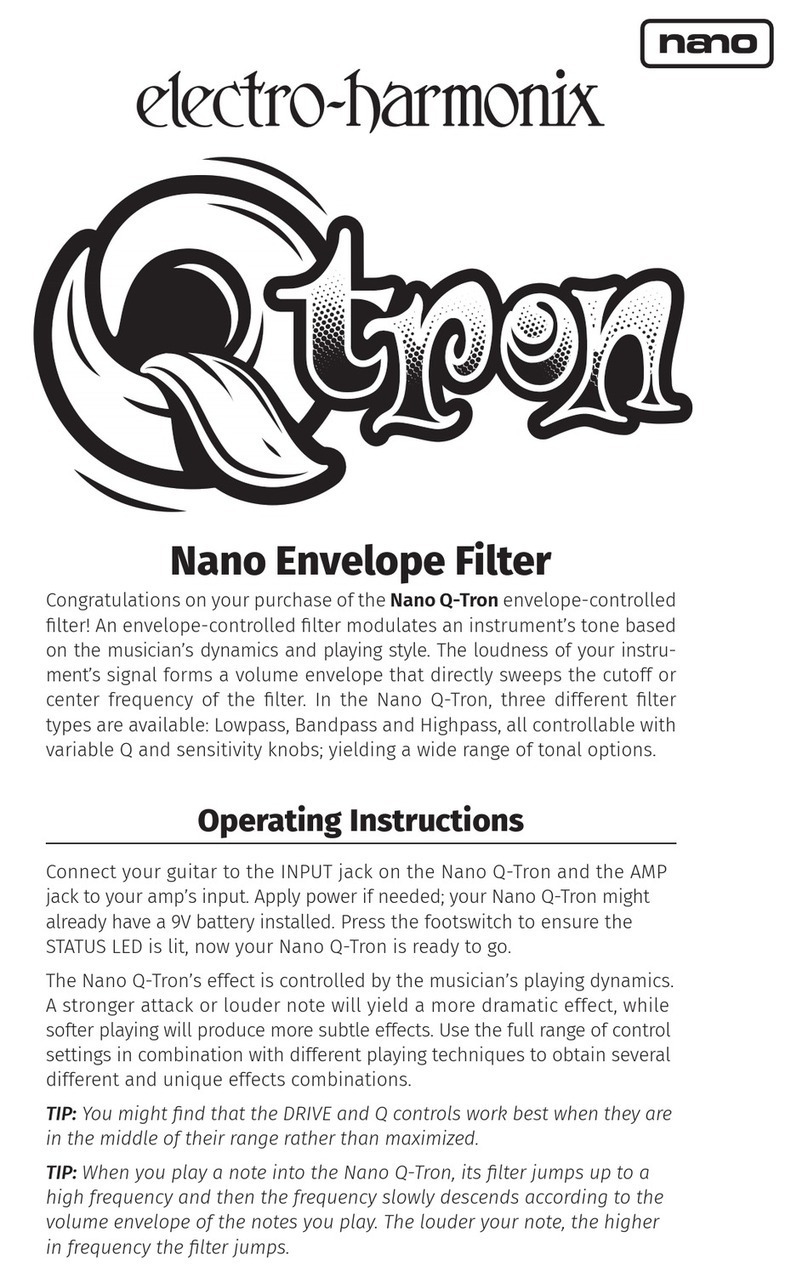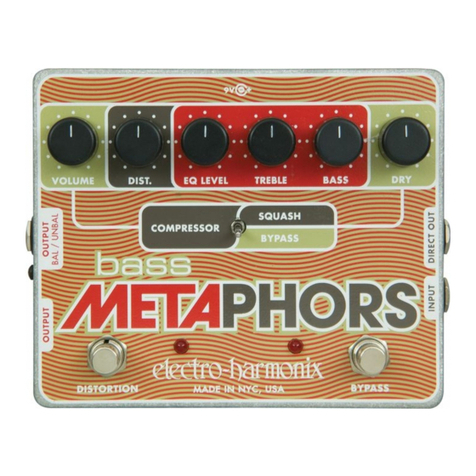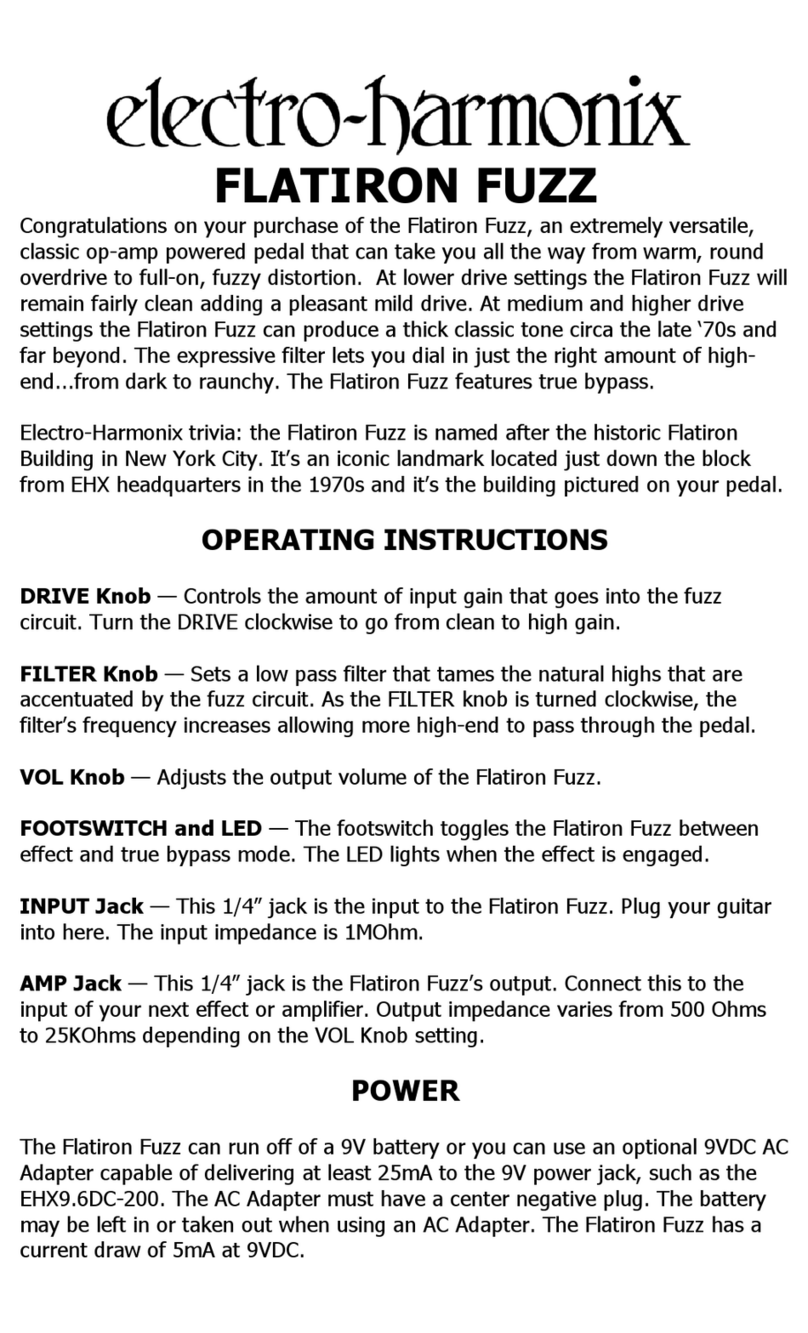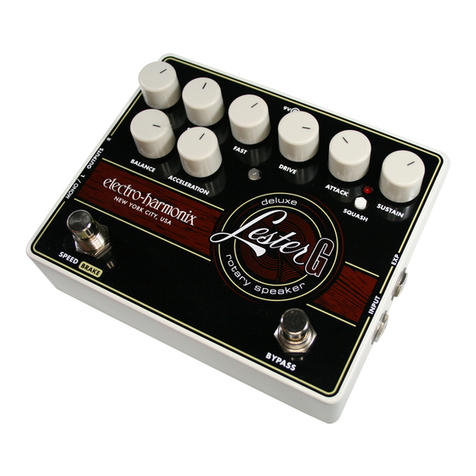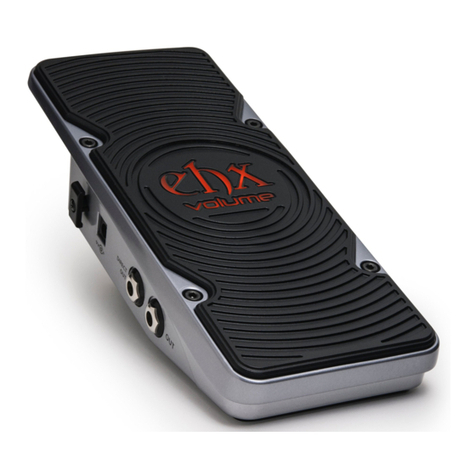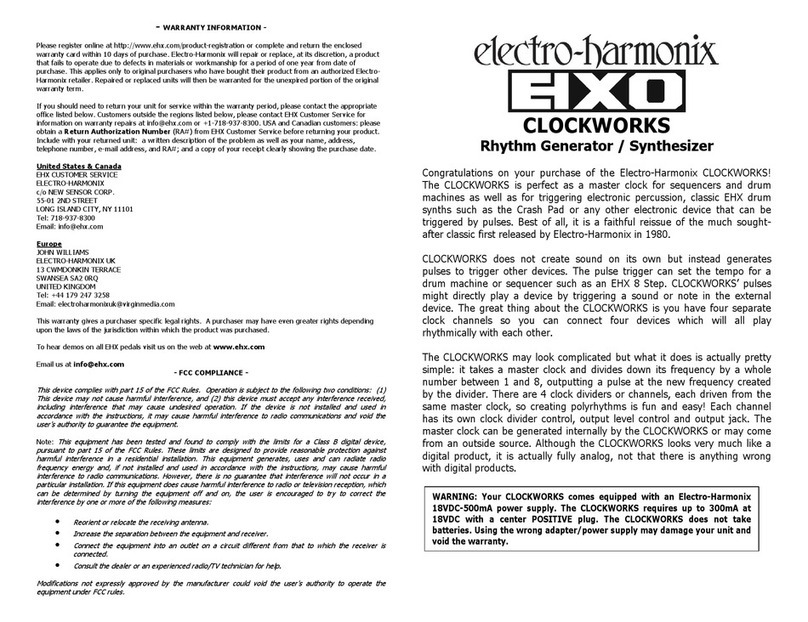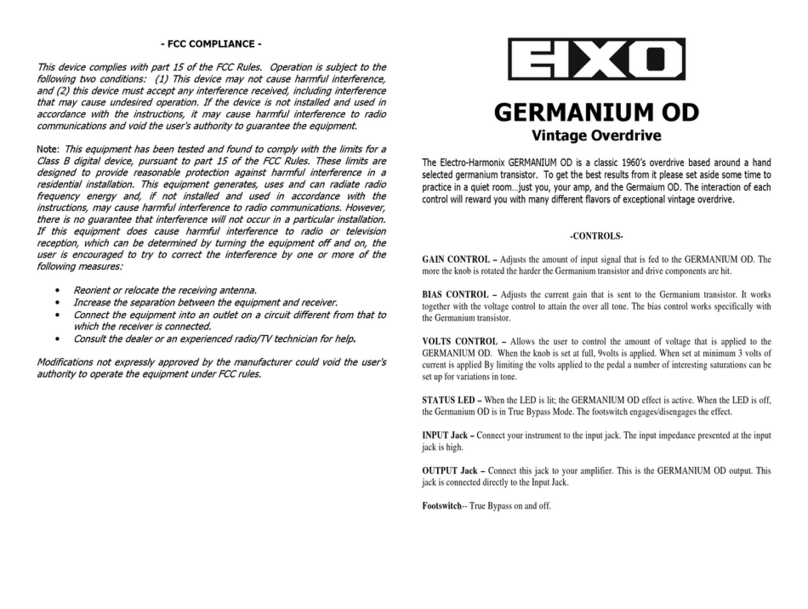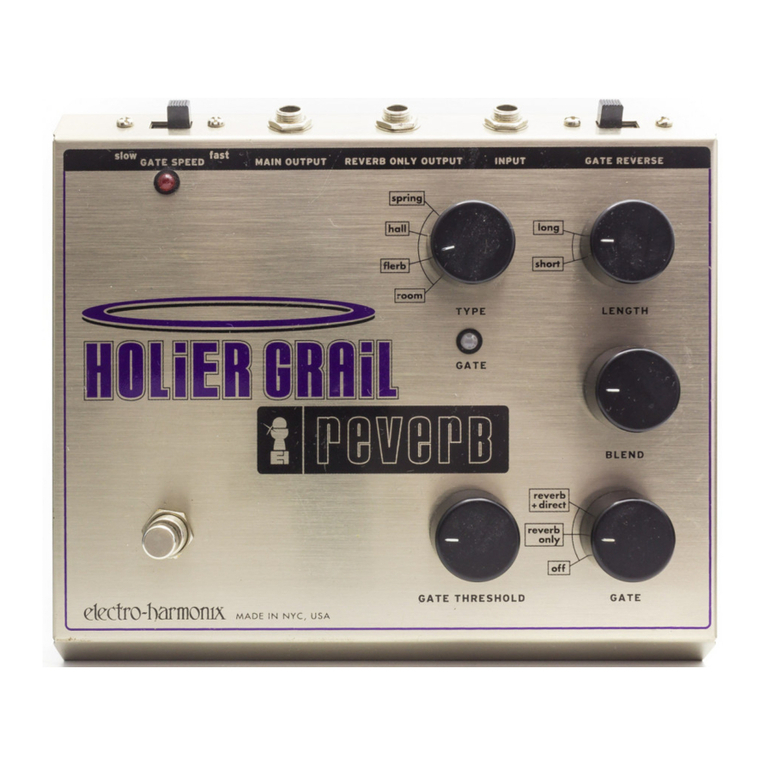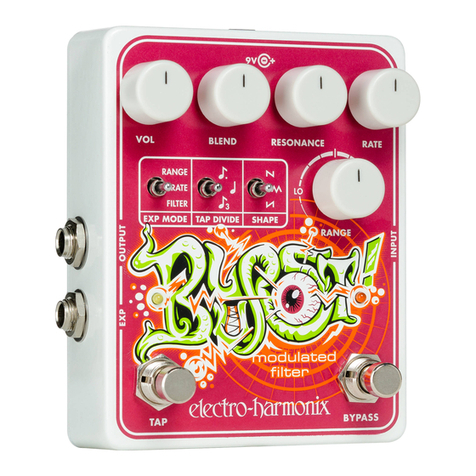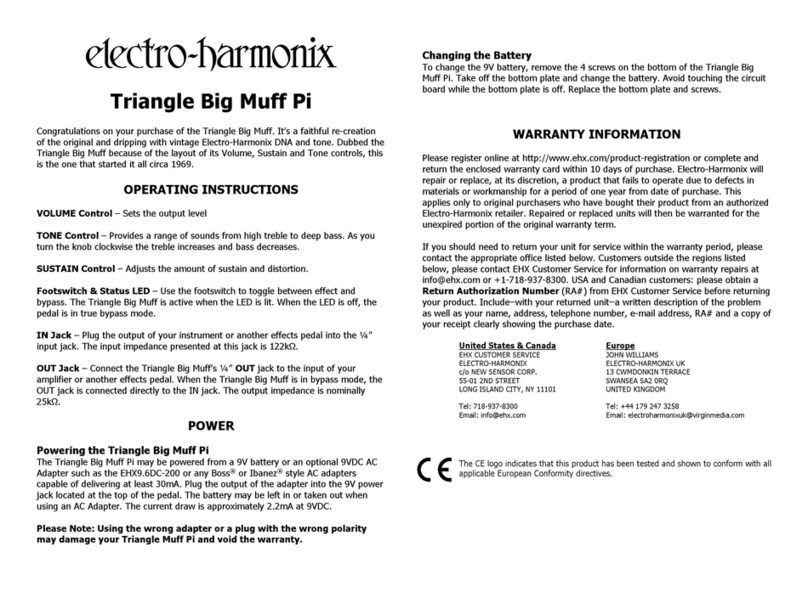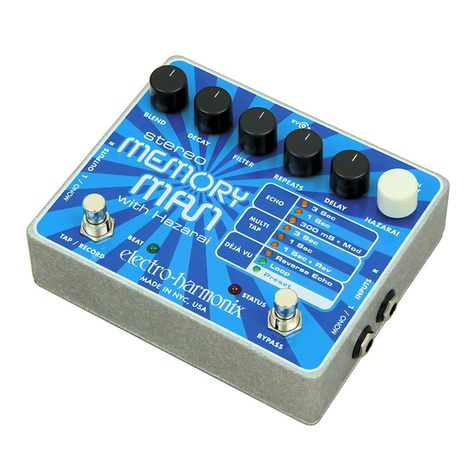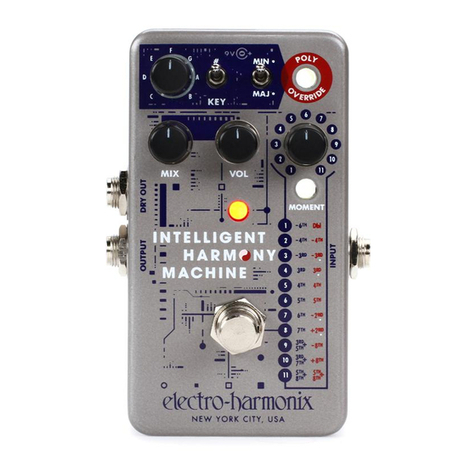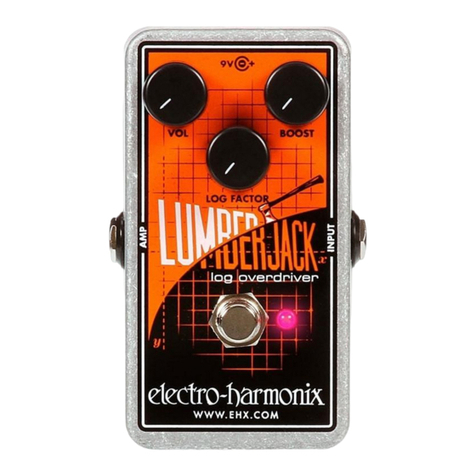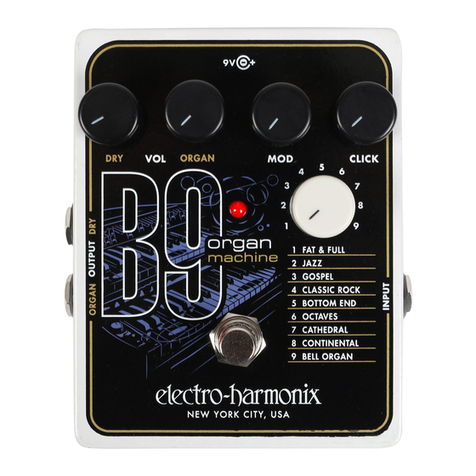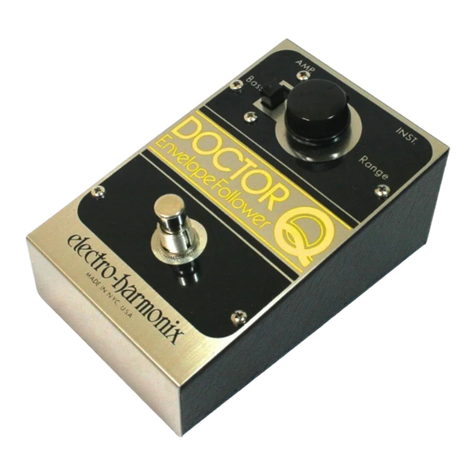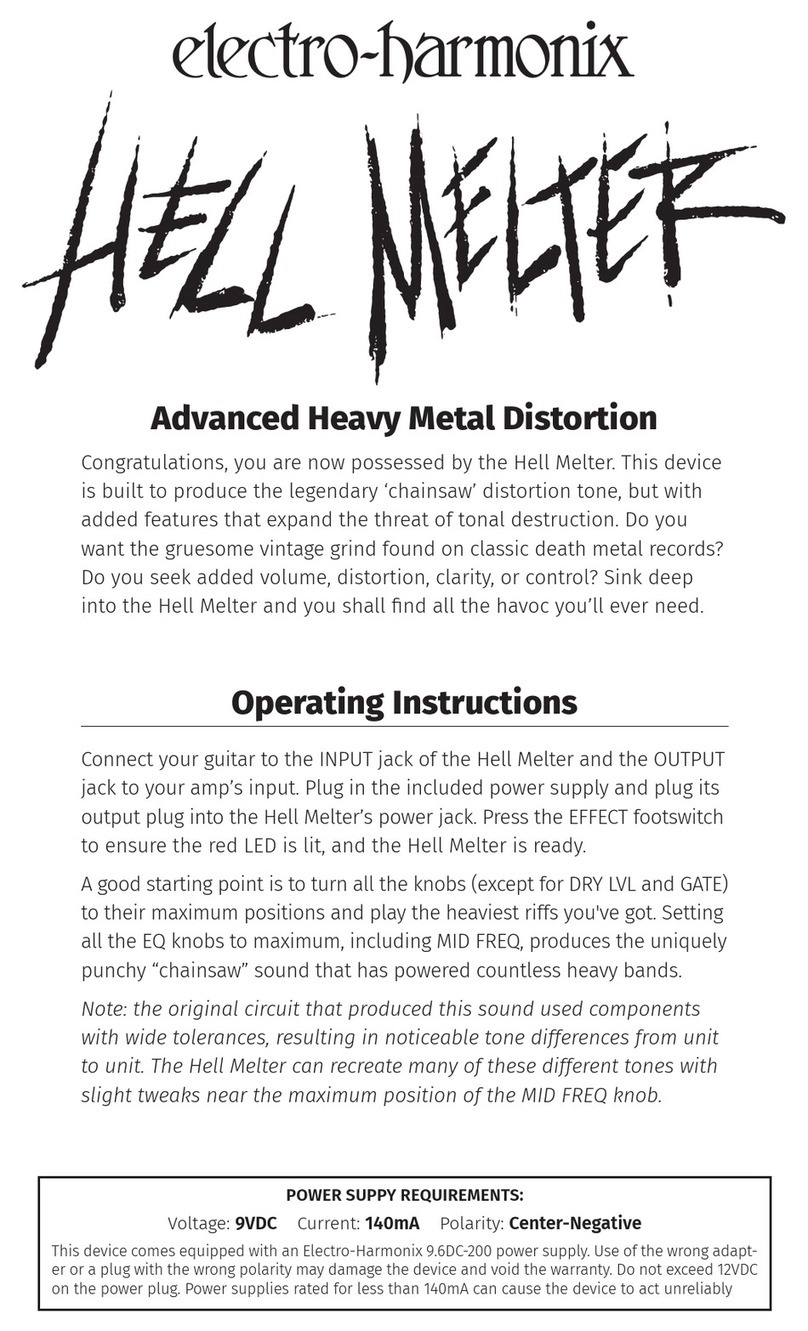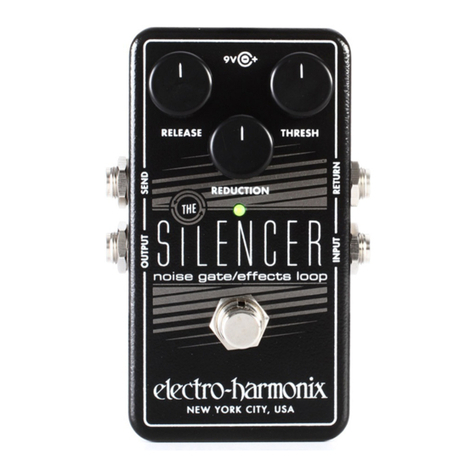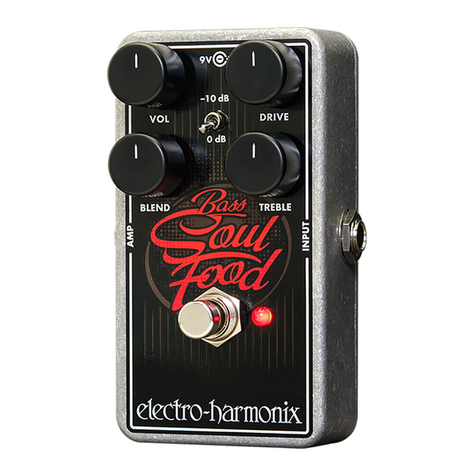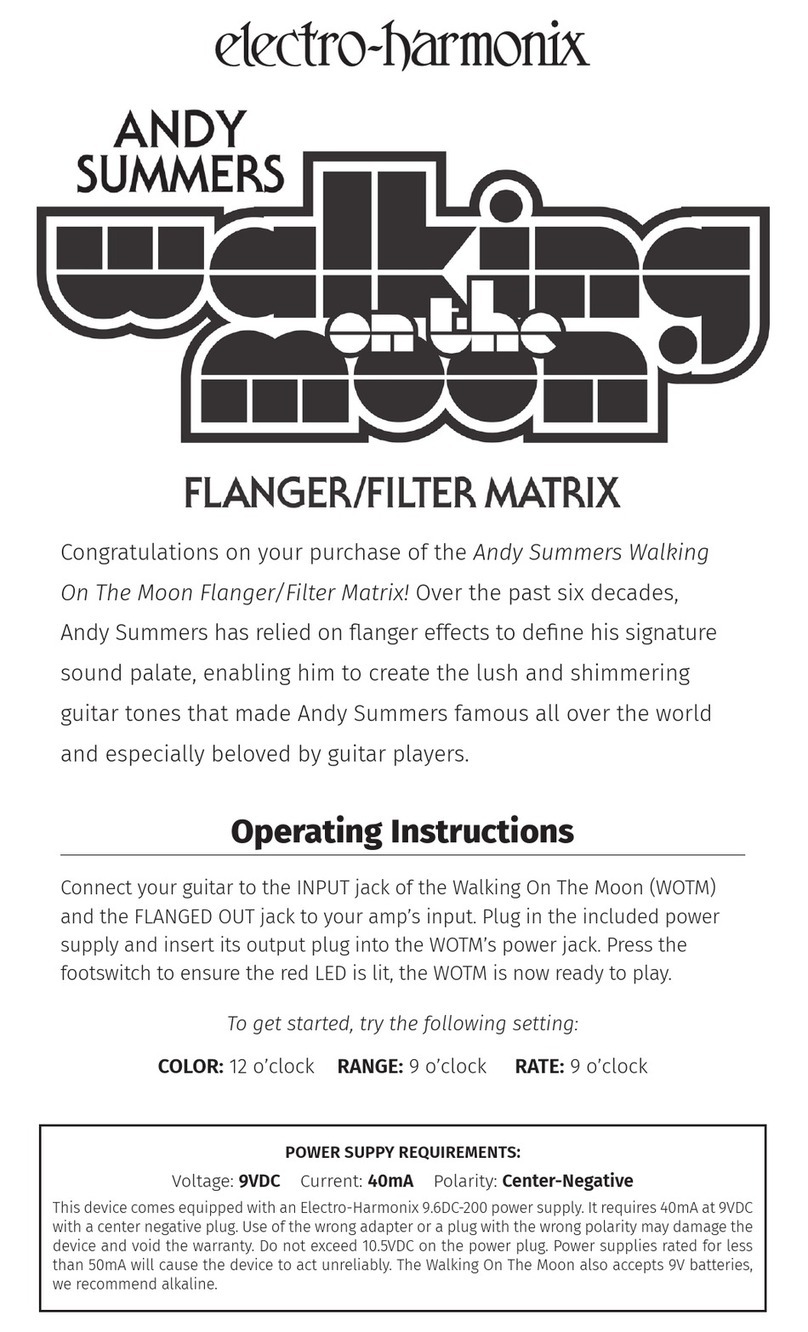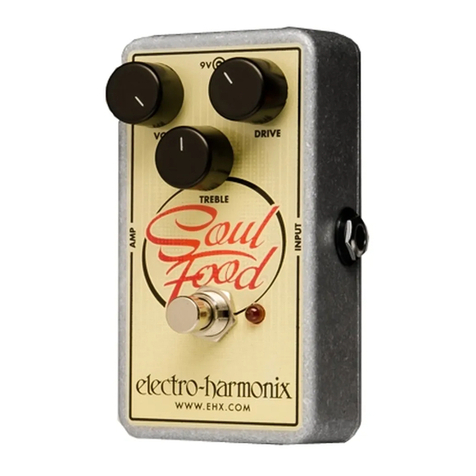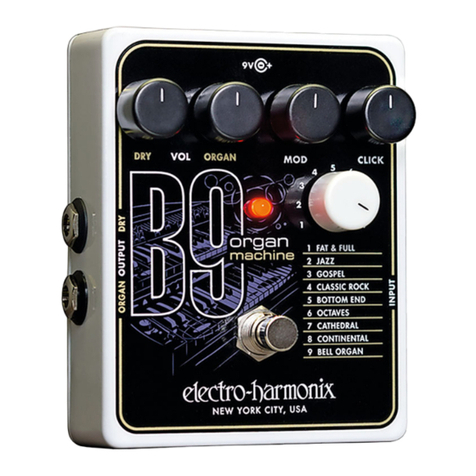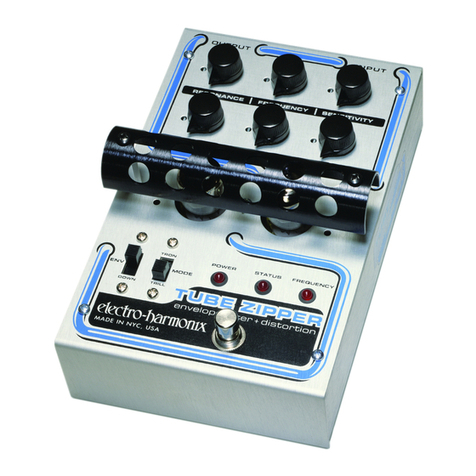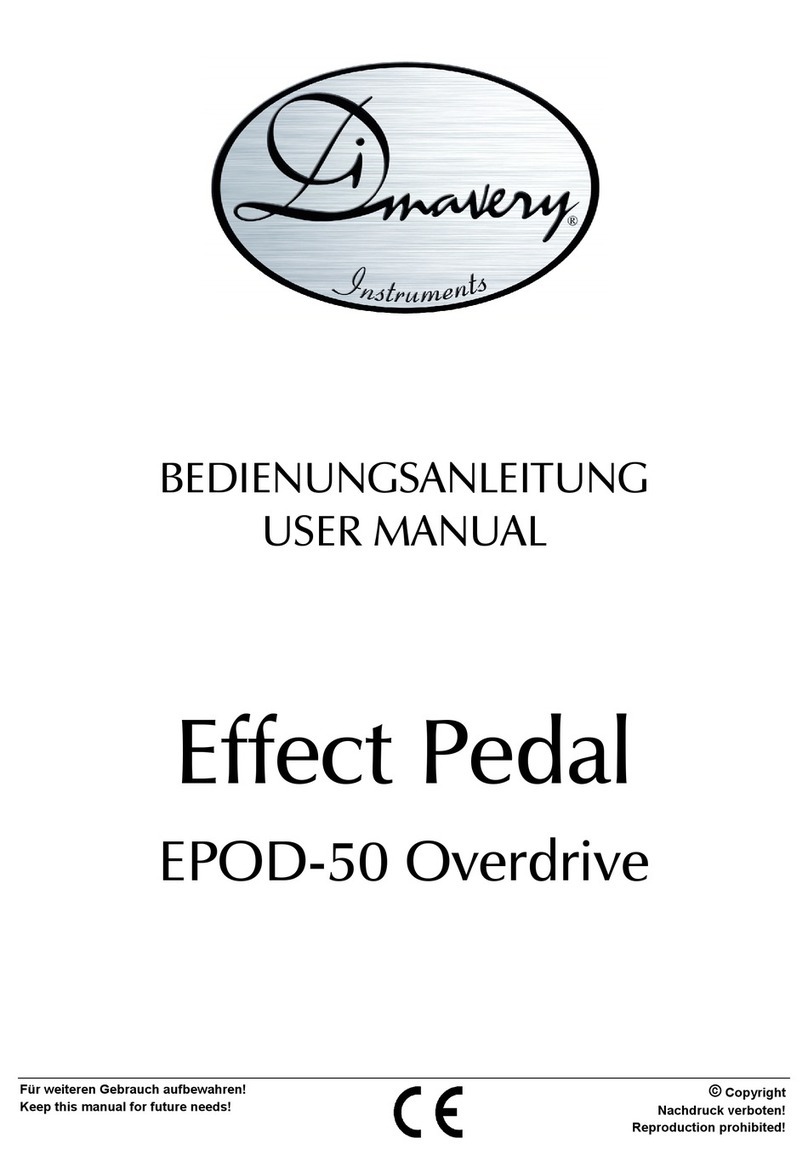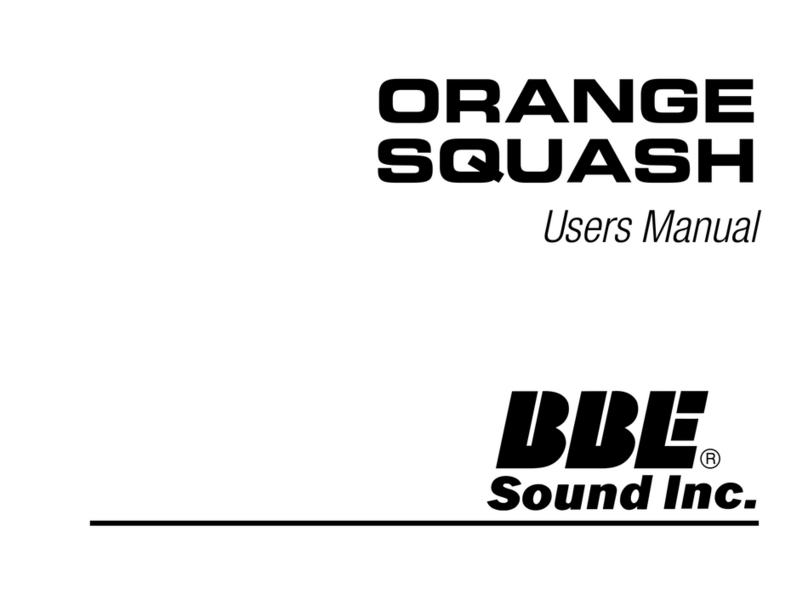PRESET DESCRIPTIONS
1. DYNAMO –An evocation of the “Dyno My”modified Fender Rhodes®electric
pianos of the 1970s and 1980s. CTRL 1 adds bass to the lower strings of your
guitar. CTRL 2 adjusts the "tine" or high-end overtones.
2. WURLI –Electro-Harmonix pays homage to the classic sound of the Wurlitzer®
electric piano. CTRL 1 adjusts tremolo depth. CTRL 2 sets tremolo speed.
3. SUITCASE –This preset pays tribute to the sound of a Fender Rhodes®electric
piano routed through a phase shifter. CTRL 1 adds a bass octave and adjusts the
“tine” or high-end overtones. CTRL 2 sets the phase shifter speed.
4. MALLETS –Here we have the sound of a wood marimba. CTRL 1 adjusts the
volume of the sub-octave voice on bass strings. CTRL 2 sets chorus depth.
5. EIGHTY EIGHT –This preset emulates a Fender Rhodes®88 electric piano with
built-in tremolo. CTRL 1 simultaneously controls the volume of the sub-octave
voice on bass strings and the volume of the hammer strike on the tines. CTRL 2
sets tremolo speed with full counter-clockwise disabling the tremolo effect.
6. TRI-GLORIOUS –EHX’s take on the lush sound of a Dytronics/Dyno My CS-5 Tri
Stereo Chorus. CTRL 1 adjusts chorus depth. CTRL 2 sets chorus speed.
7. VIBES –Here we capture the sound of a metal vibraphone with motorized
tremolo. CTRL 1 adjusts the high pitch attack. CTRL 2 sets tremolo speed.
8. ORGAN –This preset offers a highly touch-responsive percussive organ. CTRL 1
adjusts the sound of the organ, making the sound brighter and fuller as the knob
is turned clockwise. CTRL 2 sets the rotating speaker speed.
9. STEEL DRUMS –A “bang on” recreation of the distinctive metallic sound of a
steel drum. CTRL 1 adjusts chorus depth. CTRL 2 sets chorus speed.
PRESET TEMPLATES
Please see the enclosed setting sheet for suggestions on how to set the knobs for each
preset. A blank user settings page is also included. Photocopy the blank user setting
page to keep a record of your preferred sounds. Or, download a PDF of blank settings
at http://www.ehx.com/assets/instructions/key9-presets-outlines.pdf.
NOTES AND SPECIFICATIONS
Buffered bypass
Input impedance: 1M
Output impedance (for both output jacks): 500
Current draw: 100mA
Rhodes is a registered trademark of Joseph Brandstetter.
Wurlitzer is a registered trademark of Gibson/Baldwin.
TIPS ON GETTING OPTIMUM PERFORMANCE FROM THE KEY9
1. The KEY9 is generally best used as the first pedal in an effects chain. Place
modulation, delay, and reverb effects after the KEY9. The unit will not perform
well if placed in the effects loop of a guitar amp.
2. The KEY9 typically works best using the bridge pickup of a guitar, although some
presets do sound good on the neck pickup. If a guitar’s pickup has a weak
output, performance can be improved by putting a clean boost or a compressor
in front of the KEY9. Avoid placing a distortion or overdrive in front of the KEY9.
Placing distortion or overdrive in front of the KEY9 will muddy up the input signal
and cause the tracking to be unstable. If overdrive or distortion is desired it’s
best to place it after the KEY9.
3. Some guitar amplifiers have an uneven, peaky frequency response that may
cause some sounds to be over accentuated. Use a compressor in front of or after
the KEY9 to help smooth out this “peakiness.”
4. The KEY9 upper frequency range is limited for sounds such as Vibes or Mallets.
This limitation is due to nature of the actual sounds of these percussive-oriented
instruments, where harmonics decrease as the note is played increasingly higher.
On guitar, the usable range for these sounds goes up to the 15th fret of the
high-E string. The harmonics of the attacks are just too high above that and all
that is left is the sound’s attack. As a point of reference, think about the top
notes on a piano, where just about all you can hear is the attack in the form of
hammer noise.
5. The KEY9 typically tracks great and will follow whatever you play, but sloppy
guitar playing will sound like a sloppy electric piano player. The KEY9 will bend
notes as you bend them on the guitar. However, electric pianos do not bend, so
for a more authentic sound avoid or limit bending.
